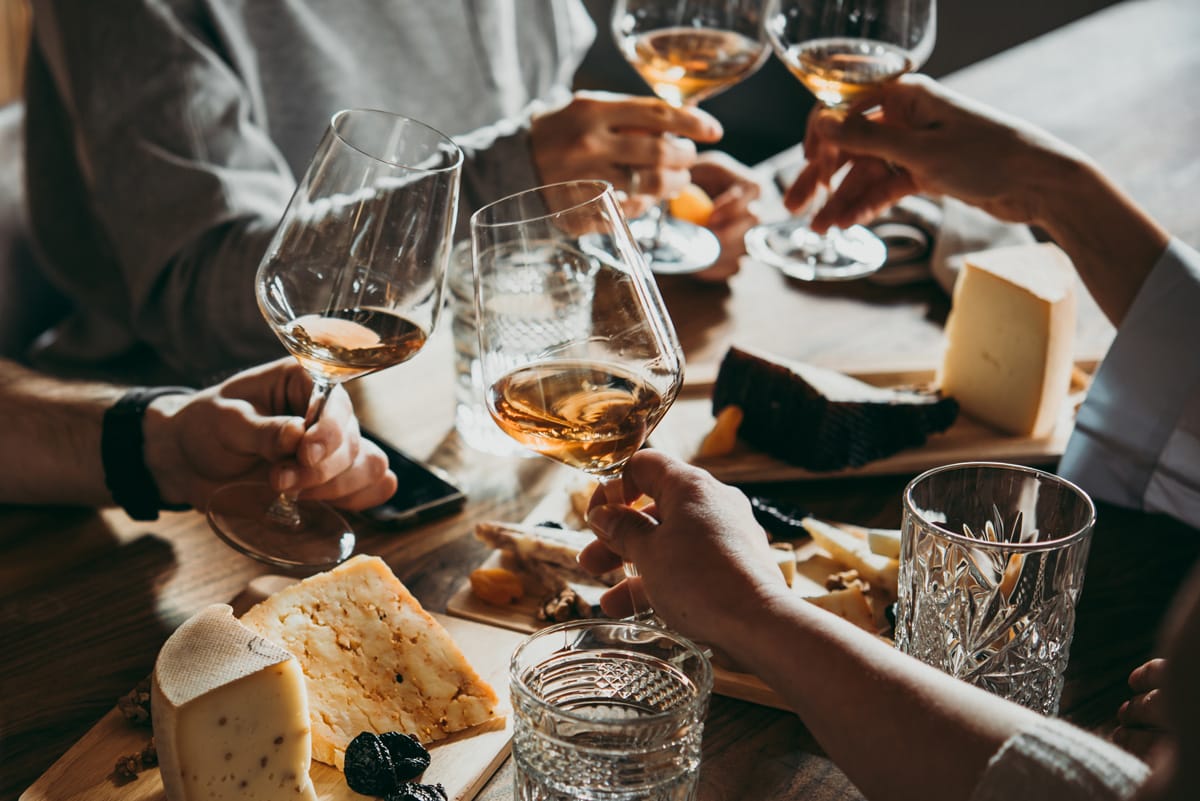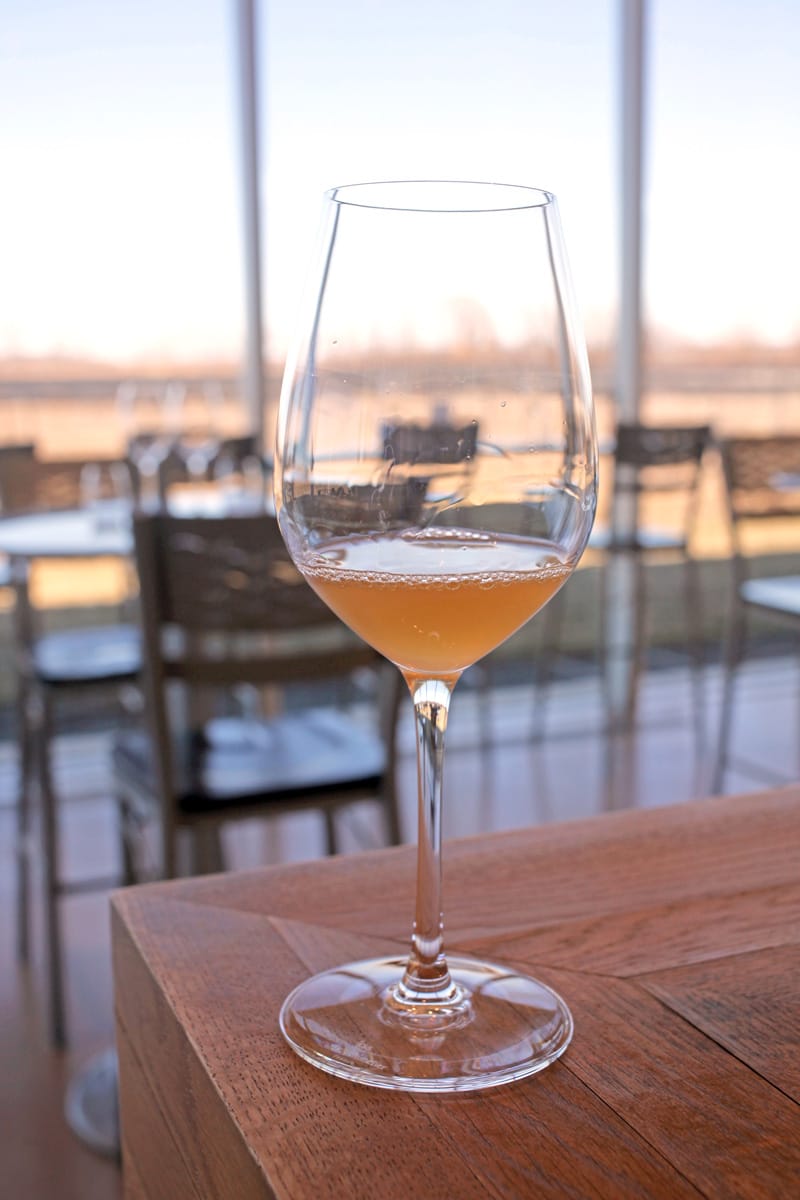
Wine Culture Magazine

Orange wine may be a new trend, but it’s actually an ancient technique. istockphoto.com/gregory_lee photo
Back in 2014, when Ann Sperling made her first orange wine from Vidal grapes, Ontario’s Vintners Quality Alliance flatly refused to certify it. That motivated the Niagara winemaker to seek an official rule change and, on Canada Day in 2017, Ontario became only the second region in the world to grant orange wine its own category, making the province a global leader in one of the most exciting wine trends going.
But are consumers ready to embrace a new colour and category of wine?
Whether you call them amber, orange or the VQA’s technical “skin-fermented white wines,” they are the result of winemakers processing white grapes as they would red ones, by crushing and fermenting them on their skins. Having some characteristics of both white and red wine, without truly being either, orange wines are hard to define.
While regulating orange wines is new, the style is ancient. Friuli, Italy, has been making it for centuries and in Georgia, the birthplace of wine, its history stretches back to the first fermented grapes.

2017 Southbrook Estate skin-fermented Vidal. Michael Di Caro photo
Sperling is the person largely responsible for Ontario’s definition and rule change. The winemaker and viticulturist at Niagara’s biodynamic Southbrook Vineyards came of age on her family’s Sperling Vineyards in Kelowna, which she still co-owns. She believes wine is grown, not made. She is an evangelist for growing grapes organically and holistically, and sees orange wine as a natural extension of what she preaches in the vineyard.
When VQA Ontario denied her orange Vidal certification in 2014, she submitted the paperwork for an official rule change. The VQA responded by assembling a panel of winemakers who debated and decided the set of rules that the VQA would eventually adopt. They opted for largely inclusive framework, except for a minimum 10-day fermentation on the skins, more than twice as long as South Africa, which in 2015 became the first jurisdiction to regulate orange wine. Ontario wanted to go beyond mere skin contact and ensure the wines were entirely intentional, explains Sperling.
Since then, VQA Ontario has received only positive feedback, says executive director Laurie Macdonald. She views the process as a “poster child” and proof that VQA is set up to evolve. “It blazes a trail for the industry showing we can make these changes,” Macdonald says. “It’s a living document and we just have to keep it up to date.”
But not everyone is as satisfied. “As with everything the VQA does, I think it could’ve been done better, but at least they got around to doing it instead of dismissing a whole category of wine,” says Josh Corea, sommelier and co-owner of Toronto wine bar Archive.
For him, the motivation behind an orange wine category was wineries taking a financial hit. One of the quirks and perks of VQA Ontario is how tax rebates are tied to certification subject to a tasting panel—without certification, a winery earns less than half of what a certified wine would when selling to a restaurant.
The situation is different in British Columbia, where the BC VQA allows 100 per cent B.C.-grown wines a path to market even if they are uncertified, and without financial penalty. That’s why Christine Coletta doesn’t foresee the province following Ontario’s orange path.
“I applaud what Ontario has done as a great first step towards understanding this category of wine as a whole,” says Coletta, owner of Okanagan Crush Pad and a pioneer of the style in Canada. Instead, B.C.’s focus is on defining sub-appellations, and she sees that as “fundamentally more beneficial” for the province’s wines.
Underlying Ontario’s orange wine embrace is a generational shift in front of the bar and in the cellar.
Trail Estate’s winemaker Mackenzie Brisbois makes one of the province’s most diverse lineups of orange wines. They represent in part “going back to the old ways”; part experimenting in a region writing its first chapters; and part “trying to do better for the planet and people” by treading lighter in the way she makes wine.
People ask me if orange wine’s a fad. It’s legit. It’s not going away.
Corea attributes the rise of orange wine to the generation of millennial winemakers like Brisbois meeting halfway with millennial craft beer lovers. They happily trade highly hopped IPAs for natural wines that have the “familiar stranger funk” that skin fermentation brings. “People ask me if orange wine’s a fad. It’s legit. It’s not going away,” says Corea, noting that at Archive, orange wines outsell whites in winter. “Imagine how foolish it sounds dismissing a whole style of wine. The best orange wines to me are as good as any light red wine in terms of elegance and finesse.”
Sperling also sees orange wine bringing a new crowd to the tasting room. “There’s no boundaries with orange wine,” she says. “It’s broadening the base for wine, bringing new people in to taste and explore. And it’s such a food-friendly wine that you can throw out some pairing rules.”
After all, isn’t everything more fun when you break some rules?
Sperling Vineyards Natural Amber Pinot Gris 2017
(Kelowna, $30): Bergamot, jasmine, stonefruit, dry.
Nichol Vineyards Pinot Gris 2017
(Naramata, $23): Salmonberry, apricot, ginger, citrus, orchard fruit.
Stag’s Hollow Viognier Marsanne 2016
(Okanagan Falls, $22): Golden, lemon curd, orange peel, white pepper, meaty.
Little Farm Pied de Cuve Riesling 2016
(Similkameen Valley, $30): White flowers, white peach, lemon, honey, lime, stony, dry.
Tinhorn Creek Vineyards Innovation Series Kerner Orange Wine
(Golden Mile, $30): Mango, pineapple, pear, spice.
Free Form White 2017
(Summerland, $30): Bright, juicy, guava, pineapple, floral.

Michael Di Caro is a writer and the editor of Vitis Ontario. He has been covering the Ontario wine industry for over a decade. You can find him in the cellar or among the vines uncovering the stories behind the bottle.

Michael Di Caro is a writer and the editor of Vitis Ontario. He has been covering the Ontario wine industry for over a decade. You can find him in the cellar or among the vines uncovering the stories behind the bottle.
Copyright © 2025 - All Rights Reserved Vitis Magazine